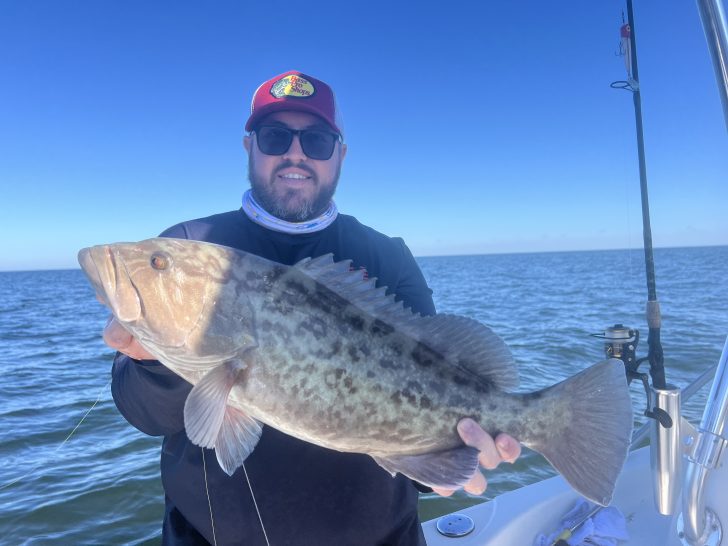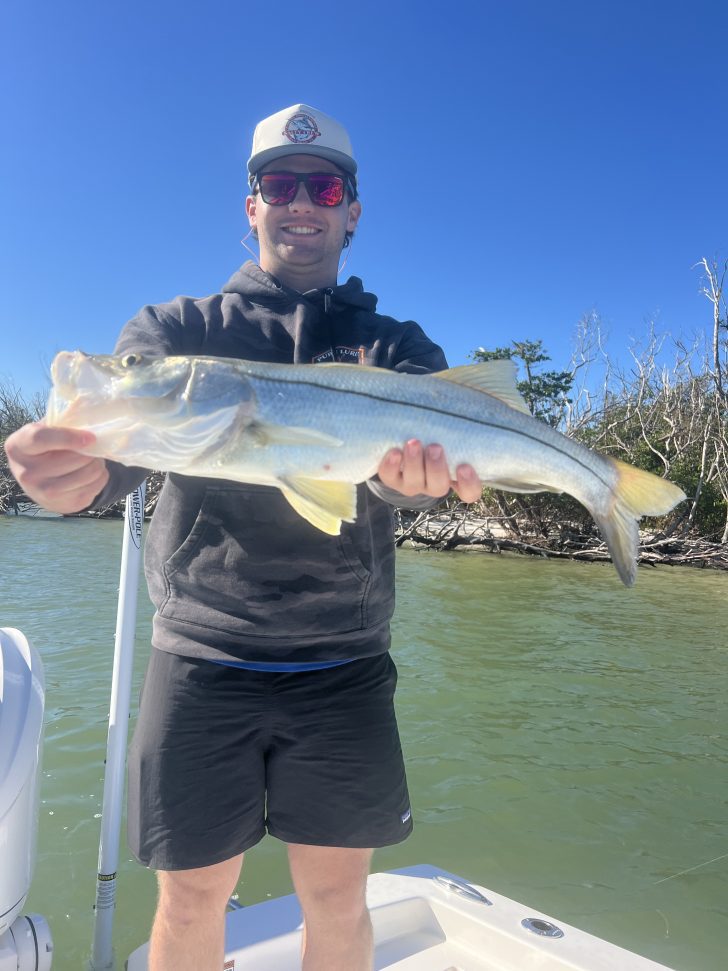By: Captain Terry Fisher

JANUARY-MARCH
Sheepshead will be one of the easiest fish to target as they. Larger fish have moved from the offshore reefs and wrecks to the inland waterways to spawn and eat. They will congregate around and under docks, mangroves, around oyster bars and seawalls, making it easy for anglers to locate. Like many species, they like structure such as piles and rocks. Many anglers will use ‘mud crabs’ or fiddler crabs to catch them. I keep it much simpler by using shrimps on small bait hooks with a ‘pinch’ weight to assist when casting the presentation. These fish have a reputation for being difficult to catch. That’s true for any fish that are not in a feeding mode. However, to the contrary, when sheepshead decide to eat, they virtually will hook themselves due to their aggressive mode.

Spanish mackerel will begin their migration southward. Artificial presentations such as Gotcha lures, gold and silver spoons produce. Watch for diving birds and usually anglers will find them at those locations.
Grouper and snapper move within ten miles of the outer islands of Ft. Myers Beach, Sanibel, Captiva and N. Captiva. Some even find locations closer to the islands. The water temperature has cooled. Prior to now, guides and recreational anglers were traveling 40 to 70 miles offshore to find these fish. Nonetheless, I recommend fishing 30 miles out (80-100 ft. water) the months of January-March for the best chances of larger groupers, snappers, triggers and other fish during these months.
APRIL-JUNE
Seatrout will inhabit most grass flats in 3-6ft. of water. Look for the murky green color indicating sea grass. Larger seatrout will become more prevalent during the early spring months. Artificial presentations all work but shrimp, suspended under a popping cork, will be the most effective way to catch lots of Seatrouts.
Tarpon will begin to arrive during their annual spring migration from Mexico and beyond. Look for them off the beaches, in Pine Island Sound, Redfish/N. Captiva passes, Boca Grande and Charlotte Harbor.
In other words, this time of year and for a couple of months they will be everywhere. I suggest; anglers who have never caught or hooked a tarpon to hire a guide, as there are several locations and several different techniques to be utilized. Proper equipment is also needed.
Snook will begin to move from rivers, creeks, and canals to the beaches to spawn during April.
Redfish become the target fish for many. The higher daily tides offer anglers and fishing guides access to shallow, less pressured area(s) of the winter months. Look for them around the oyster beds, mangroves, around the passes and under docks. While artificial presentations will work, Pinfish, Pilchards and shrimps will provide best results.
Mangrove snapper are an inshore favorite. They are smaller than most of the offshore Mangrove snapper as they are younger and will not move offshore until after they reach bigger lengths (usually about 3 years). The inshore harvest length is 10 inches while the offshore catch requires 12 inches. This species is technically gray snapper.
JULY-SEPTEMBER
Redfish and snook will be everywhere in the back country areas. Anglers with shallow running boats have access because of the high summer tides. The fish will move to the mangroves for protection and new food sources from the mangrove barnacle as the tides move in, then departing to potholes as the daily tide moves out.
Seatrout will remain everywhere, but the sizes will be smaller as the water temperature heats up. Catfish become a nuisance during the summer months.
Grouper and snapper will move further offshore to 100-140 ft. of water due to water temperatures.
OCTOBER-DECEMBER
Redfish and snook will mirror the above report for the previous three months. However, this month may produce the largest redfish and snook sizes of the year. Come December the tides will not be as high, and the water will begin to cool, and anglers will be dealing with winter conditions similar to those mentioned in the first quarter.
Pompano and spanish mackerel will be for the most part ‘by catches’ while targeting seatrout on the grass flats. This time of the year is when things start changing with lower tides, less boat access to ‘back country’ areas. During the end of the year and throughout the months of January and February with low tides, fish the passes and current cuts.
